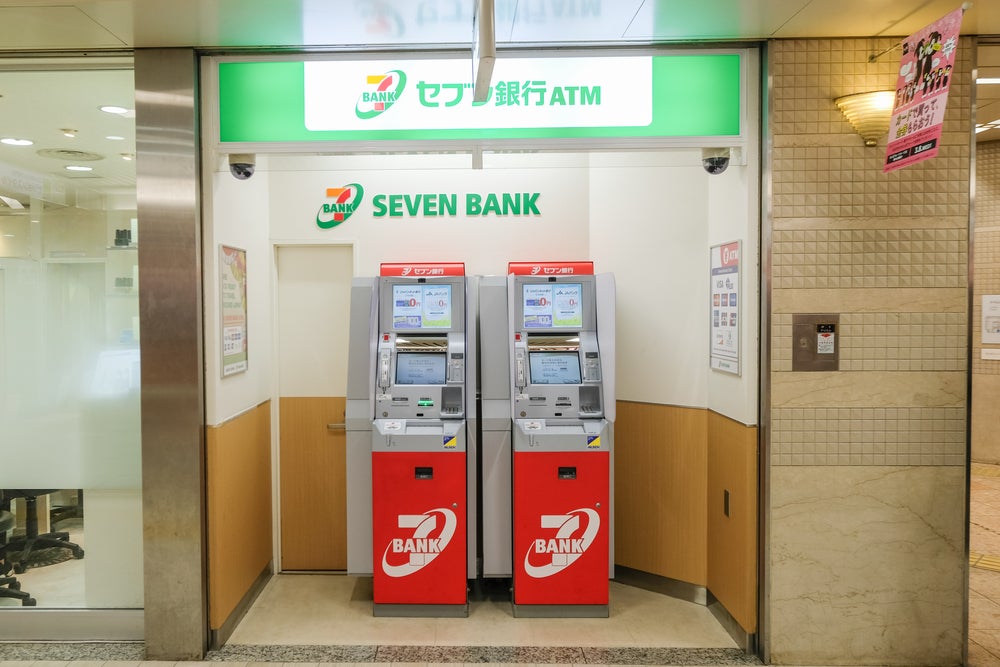The decline of the
traditional-yet-controversial consumer finance industry in Japan
may provide an opportunity for mainstream financial services
companies to access the consumer lending market, writes William
Cain. Regulation of so-called money lenders has brought the
industry to its knees, while credit card and mobile payments
providers are growing quickly
Japan has for a decade been renowned for its
innovative payments infrastructure.
It has arguably the most advanced mobile
payments market in the world and is one of the only countries to
feature unmanned, card-issuing loan terminals.
Now, the demise of a shady section of Japan’s
consumer finance industry – its so-called money lending businesses
– could give electronic payments the opportunity to take centre
stage for credit-hungry consumers.
Consumer finance companies in Japan – or money
lenders as they are known – have been subject to heavy regulation
and increased funding costs in recent years – bringing the entire
industry to near collapse and starving consumers of access to
credit. Unsecured personal loans at these consumer finance
companies contracted from JPY9.9trn ($130bn) in 2007 to JPY4trn
($50bn) in March 2011.
How well do you really know your competitors?
Access the most comprehensive Company Profiles on the market, powered by GlobalData. Save hours of research. Gain competitive edge.

Thank you!
Your download email will arrive shortly
Not ready to buy yet? Download a free sample
We are confident about the unique quality of our Company Profiles. However, we want you to make the most beneficial decision for your business, so we offer a free sample that you can download by submitting the below form
By GlobalDataThe industry’s problems stem from the
government’s introduction of its Money Lending Control and
Regulation (MLCR). The law was introduced to clean up the money
lending business, which had developed outside the more tightly
regulated bank sphere and had its roots in what some commentators
describe as “criminal operations”.
Changing credit climate
Until a decade ago, Japanese banks were
primarily corporate financing vehicles with little emphasis on
retail banking. As a result, Japan’s money lending industry
developed outside the banking sector, creating a host of
independent finance companies. These companies remained largely
outside of the scope of regulators, meaning they developed a host
of unorthodox lending and collections practices.
Loan officials for Takefuji, one of the
industry’s largest independent companies, reportedly checked the
cleanliness of customers’ kitchens and lavatories as part of their
application process. It was also criticised by regulators when an
employee attempted to collect an overdue loan by playing loud music
outside the customer’s house.
The industry’s shady operations are partly a
reflection of Japanese consumers’ attitudes towards credit. The
development of a separate consumer finance industry was because
banks rarely offered this type of finance but also because of a
cultural aversion to being seen buying goods on credit.
The Japanese government has taken steps to
clean up the industry through the introduction of the MLCR, a set
of rules which was designed to bring industry practices sharply
into check. The main requirements of the MLCR are for lenders to
repay excess interest charged to consumers and also to reduce the
amount of debt which can be offered to individuals to one third of
their income.
The new regulations led to the bankruptcy of
Takefuji after it was overwhelmed by interest refund claims from
its customers. These claims have raised questions over the
viability of independent consumer finance companies, which are not
part of larger banking groups. Many are likely to fail, according
to Kiyoko Ohora, a Tokyo-based director at ratings agency Standard
& Poor’s.
The companies hold assets which could be
useful to banks or other finance companies. Their networks of
unmanned loan terminals and proprietary credit records built up
over many years are particularly valuable.
Unmanned loan terminals dispense ATM cards to
users so they can gain access to a line of credit with anonymity
and convenience. These are popular in Japan because of a cultural
aversion to applying for credit. Applicants scan insert a photo
identification card into the terminal and input employment
information. The data is checked against credit bureau data and
other available data and scored before the loan offer and card is
dispensed. Credit can then be withdrawn at ATMs and spent as
cash.
Lack of clarity
Despite the appeal of these assets Ohora said
it is unlikely banks will seek to acquire and consolidate the
businesses in the current environment. There is still a lack of
clarity around the level of unresolved interest refund claims among
the remaining consumer finance companies. The organisations are
also culturally very different to banks.
“If we think about the remaining major
companies, I don’t think banks and other banks try to merge these
remaining companies,” she says.
“Takefuji is a sort of special company – its
owner was charismatic and strong and banks did not really want to
tie up with that kind of company. Aiful [another consumer finance
player] has a lot of interest refund liabilities and its owner is
also quite a strong character.
“There may be some other potential consumer
finance companies available but the buyers would only probably look
at them after they go into legal bankruptcy to get rid of those
potential refund claims. Otherwise it’s too risky to buy those
companies now.”
In the longer term, the clean-up of the
consumer finance industry is likely to lead to a “more measured and
balanced business model” in which the industry’s unmanned terminals
and credit data may be put to better use, according to Tokyo-based
Neil Katkov, a senior vice president at Celent, a consultancy.
“I think the answer is a whole scale
re-organisation of the industry which takes its very strong and
innovative points such as the unmanned branches and the ability to
reach into the cash flow-challenged sector,” he says.
“They use very savvy advertising approaches
and marketing approaches. They have very valuable credit databases
– it is basically a credit bureau for the consumer finance
industry, with detailed data on that customer segment. It is all
very valuable stuff.
“Traditionally it’s been tied up with this
industry which started out as a criminal operation. Now, kind of
like Las Vegas, it has cleaned up over the years. It emerged from a
business model whose very premise was basically to gouge
customers. Regulators eventually wanted to shut that down, so
in a sense its very premise caught up with it.
“But the consumer finance companies did
develop all these very valuable assets and I think that basically a
major reorganisation which puts these assets to work in a more
measured and balanced business model is the answer. And I think
that’s going to happen.”
Banks moving in
Shinsei Bank has been one of the first movers
in this area. It has repositioned Lake, its consumer finance
business, into its retail banking franchise and is actively
marketing to consumers that Lake is part of Shinsei Bank. This move
is one step in the reorganisation of consumer finance into a
bank-operated customer segment, an arrangement which Katkov expects
to be the final endgame of the consumer finance industry under the
new regulations.
“It’s really predicated on the business model
not being viable and more failures due to the financing issues,” he
says.
“Then it’s a case of what do you do with the
assets. Similarly if you do have firms that are being folded into
savings or retail operations like what happened with Shinsei, then
other firms – even if they do not go bankrupt – may see that is the
route to go. That’s the premise [of the endgame scenario].
Basically the overall direction will be in the cleanup and
recycling of the assets into the more orthodox or mainstream
finance.”
It may even be possible to use the unmanned
terminals to issue more conventional card products, like prepaid
cards or credit cards, in place of the ATM cards, according to
Katkov. Regulatory and compliance issues would need to be overcome
in order for this to become a reality, he adds.
Opportunities for new
players
The real opportunity for the payments industry
in Japan may be greater than the potential for picking up the
scraps of customer databases and unmanned loan terminals from a
collapsing consumer finance industry.
As Japan’s old consumer finance industry
declines, the door is being left open for new forms of finance to
fill the gap. Innovative operators like NTT DoCoMo and Sumitomo
Mitsui are at the forefront of this.
NTT DoCoMo, the country’s biggest mobile phone
operator, created the first large-scale mobile payments venture
when it bought 34% of Sumitomo Mitsui Bank’s credit card
subsidiary, Sumitomo Mitsui Card Co., in 2005.
The investment from NTT and the partnership it
created disarmed the types of bickering between banks and
telecommunications companies which have until recently held back
the development of mobile payments in much of the rest of the
world.
NTT and Sumitomo Mitsui Card (SMC) immediately
started work on building a new payments brand they called iD which
would provide the acceptance platform for mobile contactless
payments in Japan. SMC is responsible for signing up merchants to
offer radio frequency identification (RFID) iD payment terminals
which enable consumers with DoCoMo RFID-enabled phones to transact
by waving their handsets over the terminal.
SMC has installed around 510,000 of these
terminals at merchants in Japan so far. Mobile phones are linked to
an iD-compatible credit card account – the cards are issued by
DoCoMo itself and a number of partner issuers including SMC and
retailers which have their own credit card programmes.
DoCoMo’s shift from telecommunications
provider to credit issuer has so far proved successful. Its credit
card receivables – which include credit purchases made on mobile
phones – increased from JPY72,996m to JPY126,009m between 2009 and
2010. Faced with declining growth in Japan’s highly penetrated
mobile phone market, its shift into financing activities has helped
the company diversify its revenue streams.
It is seeking to develop further synergies
between telecommunications and payments by making strategic
investments in mobile advertising, gaming and e-commerce
businesses. The growth of its credit card portfolio is partly a
result of these synergies. Perhaps the biggest factor, however, is
the loyalty benefits it has been able to offer its subscribers
which use its mobile phone and payments services.
Users of the Osaifu-Keitai (mobile wallet)
service can pick up loyalty points from making phone calls and
making purchases using their mobile phone. Retailers which offer
the iD brand are able to market special offers and discounts to
users of the Osaifu-Keitai service via SMS and email. NTT and
McDonalds Japan – one of the locations where mobile payments are
offered – signed an agreement in 2007 to create an e-marketing
programme combining information the two companies have on
consumers.
Users of the service can also pick up extra
points by using DoCoMo’s Visa and MasterCard branded credit cards
which are issued in conjunction with the service for purchases
outside the country or at outlets where the iD brand is not
available.
Around 16m NTT customers subscribe to its
Osaifu-Keitai (mobile wallet) and Sumitomo Mitsui has also
benefited from the partnership. Its credit card business line,
which includes SMC as well as a number of other credit card-issuing
subsidiaries including Cedenya Financial, posted strong growth in
the 2011 fiscal year, ending in March 2011.
Fee and commission income increased from
JPY143,987bn to JPY181,160bn and consolidated net segment profit
increased from JPY5.1bn to JPY35.7bn.
The growth of mobile payments and improvements
in credit card profitability are in stark contrast to the general
outlook for consumer credit in Japan. The decline of Japan’s
consumer finance industry and the move towards more mainstream,
bank-operated financial services may finally push Japan’s
cash-based economy into an electronic age.






